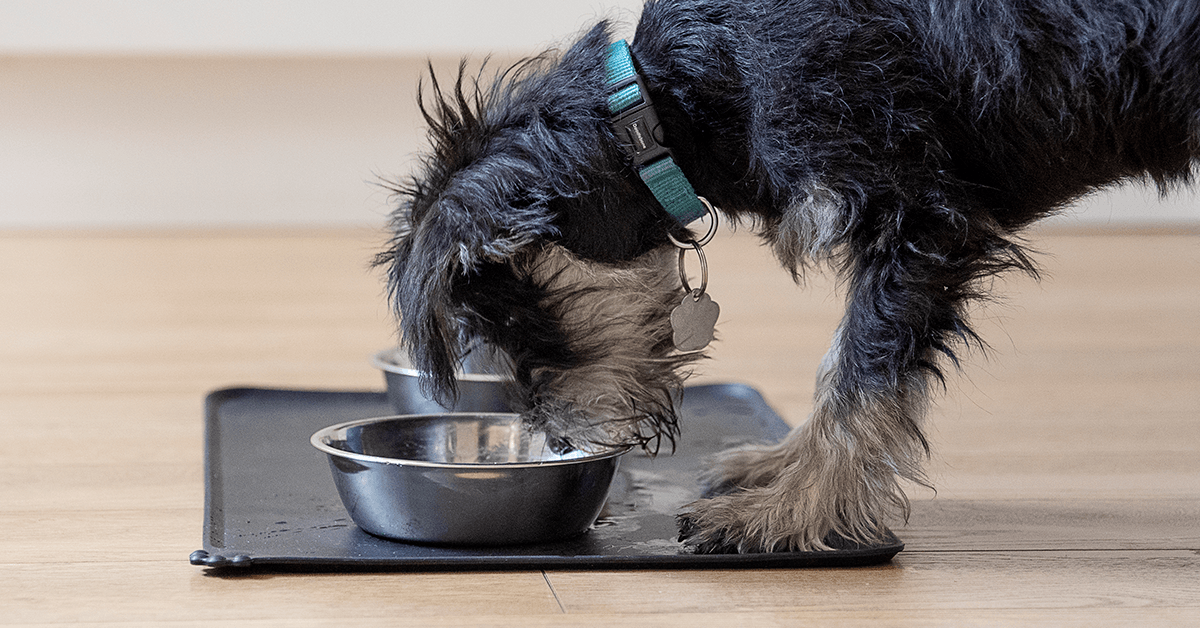Carolyn Menteith is a behaviourist at tails.com with over 25 years of experience working with and training dogs.
Along with all the other titles we can throw at it, last year can certainly go down as the Year of the Junk Food. Lockdown boredom had us all comfort eating and the average person is (apparently) 8lbs heavier than they were pre pandemic. But junk food isn’t just about weight gain – what we eat has an impact on our mood, our energy and even our behaviour.
This link between food and behaviour has been well known in the horse world for years. Phrases like “feeling your oats” and “full of beans” date back to the early 19th century and referred to the energetic, excitable, high spirited, often challenging, behaviour that occurs when a horse is fed such high energy food.
Dogs are no different but thankfully there are plenty of choices for owners to feed a high quality, well-balanced diet that their dog enjoys, and that supports them not just physically but also mentally and behaviourally.
When it comes to the link between diet and behaviour however, that is just the start. While what we feed is vital to our dog’s healthy and happiness, when it comes to behaviour, how we feed is just as important.
How do dogs eat?
Think about how the ancestors of our dogs would eat. They were (and in many parts of the world, still are) scavengers and opportunistic hunters. A large part of their day would be spent looking for food and using their brains, noses, and agile bodies to search out tasty morsels or potential snacks. Whatever they found might well need digging out, gnawing, chewing, even unwrapping – and so would take time and dexterity to eat.
Compare that to the way most companion dogs eat. A couple of meals a day, served up in a bowl that probably takes 30 seconds to devour (or 3 seconds if you have a Labrador!). Where is the fun, the challenge or the feelings of success in that? It’s about as challenging as our lockdown pizza delivery order!
Don’t underestimate the effects of success when it comes to hunting out food. When something that is perceived as rewarding happens, the neurotransmitter dopamine is released into the brain and produces a rush of joy. It perks the brain up, brings feelings of pleasure and enhances a dog’s feel-good factor. In other words, dopamine is the chemical of happiness – and that is something we can give our dogs by ensuring their daily routine includes activities that produce healthy amounts of dopamine.
Too little dopamine can result in lethargy, depression, social withdrawal and lack of focus or concentration – all things behaviourists see often in companion dogs, and that can be at the heart (or the brain) of many behavioural and training issues. In contrast, dopamine not only keeps your dog happy, but it helps to prevent boredom, aids in the reduction of fear and anxiety, builds confidence and helps dog learn. Reward-based training isn’t just about treats – it’s about dopamine too!
Making mealtimes fun!
Thankfully we have the perfect opportunities to address this in our dog’s meal times. The first step is to stop thinking of feeding your dog as being something you just quickly do between chores. Instead start thinking about how your dog would naturally eat and start to introduce some of those elements into dinnertime.
These elements include:
- Sniffing out food
- Searching for food
- Gnawing
- Chewing
- Ripping and tearing
- Having lots of little successes
There are plenty of enrichment toys you can buy that will help – some dispense food a bit at a time when the dog rolls the toy, others are puzzle-based that need some canine brainpower, while others are made of strong rubber that can be stuffed with food so the dog gets the chance to gnaw and chew.
You don’t have to spend a fortune though. Putting food into an old kitchen roll tube and folding the ends down will give a safe, puzzle toy that will encourage paw and nose dexterity, and give a chance to tear and rip. A small cardboard box can hide food – as can a towel with pieces hidden in folds. Start to look at your mail order boxes to see if they would make an interactive feeding opportunity!
And if you really aren’t feeling creative… take your dog’s food and scatter it around in the garden for them to sniff out and find.
You don’t have to do this every time you feed your dog but certainly do it several times a week and you will start to see positive changes in your dog’s behaviour – and in their happiness.
So when it comes to your dog’s dinner… It ain’t what you do, it’s the way that you do it!

